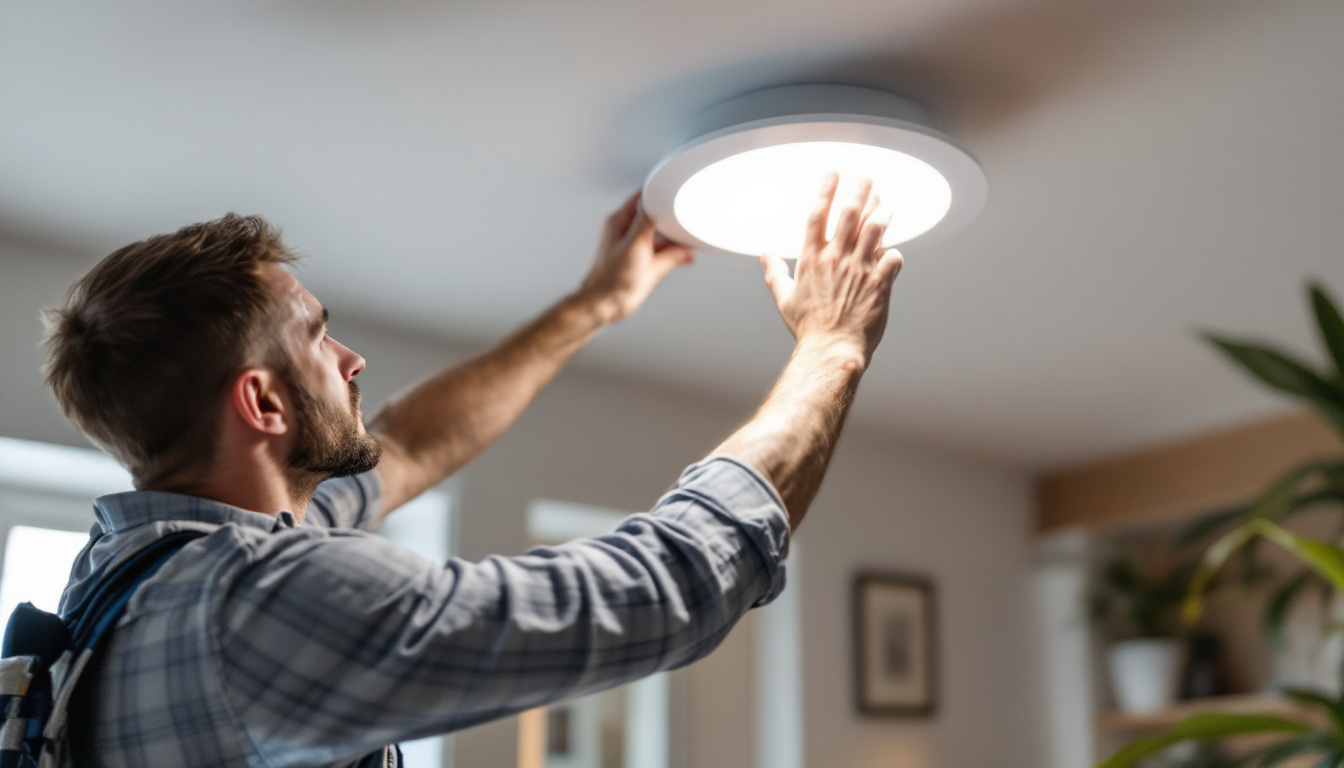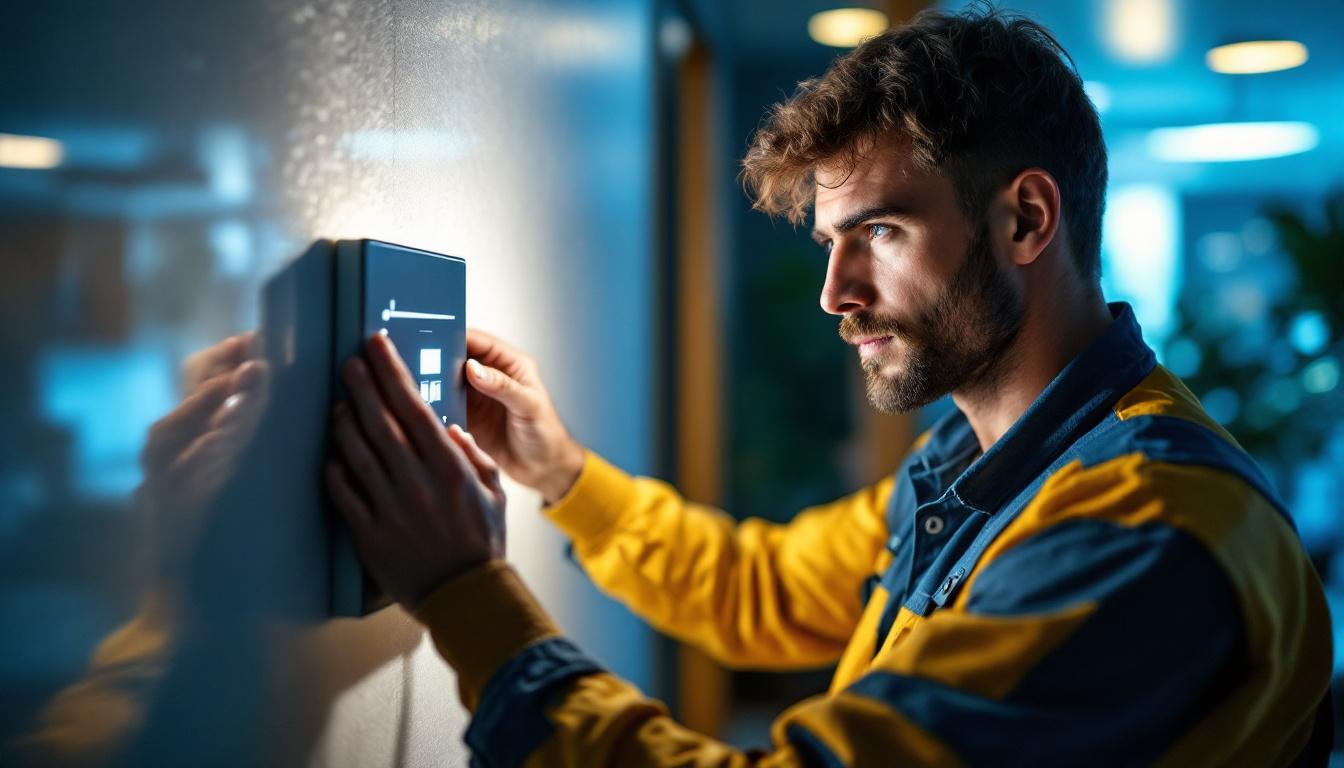
In the dynamic world of interior design and construction, lighting plays a pivotal role in shaping the ambiance and functionality of a space. For lighting contractors, staying updated on the latest trends, technologies, and regulations in apartment lighting is not just beneficial; it is essential. This article explores the importance of keeping abreast of developments in the lighting industry and how it can enhance the services provided to clients.
Over the years, the approach to apartment lighting has undergone significant changes. From traditional incandescent bulbs to modern LED technology, the evolution has been marked by innovations that prioritize energy efficiency, sustainability, and aesthetic appeal. Understanding this evolution is crucial for lighting contractors who wish to offer the best solutions to their clients.
The transition from incandescent lighting to LED has transformed the landscape of apartment lighting. LED lights consume significantly less energy, have a longer lifespan, and provide better quality illumination. This shift not only benefits the environment but also reduces utility costs for residents. For lighting contractors, familiarity with LED options and their applications is vital in meeting client expectations.
Moreover, LED technology has expanded to include a variety of styles and functionalities, such as smart lighting systems that can be controlled via smartphones or voice-activated devices. Staying updated on these advancements allows contractors to offer modern, tech-savvy solutions that appeal to today’s homeowners.
Current trends in apartment lighting design focus on creating versatile and adaptable spaces. Open floor plans, which are increasingly popular, require lighting solutions that can effectively illuminate multiple areas without creating harsh contrasts. Techniques such as layering light—combining ambient, task, and accent lighting—are essential in achieving a balanced and inviting atmosphere.
Additionally, the trend towards minimalism emphasizes the need for fixtures that are not only functional but also aesthetically pleasing. Lighting contractors should be aware of popular styles, such as industrial, mid-century modern, and contemporary designs, to cater to diverse client preferences.
As sustainability becomes a priority in construction and design, energy efficiency in lighting has gained significant attention. energy-efficient lighting solutions not only reduce environmental impact but also provide long-term cost savings for apartment residents.
Lighting contractors must stay informed about energy codes and regulations that govern lighting installations. Many regions have adopted strict guidelines aimed at reducing energy consumption and promoting sustainable practices. Familiarity with these regulations ensures compliance and helps avoid potential penalties for clients.
Moreover, understanding the nuances of energy efficiency ratings, such as the Lighting Facts label, enables contractors to recommend the best products to their clients. This knowledge not only enhances the contractor’s credibility but also builds trust with clients who are increasingly conscious of their energy consumption.
Implementing energy-efficient lighting solutions offers numerous benefits. For one, they significantly lower electricity bills, which is a major selling point for apartment residents. Additionally, energy-efficient lighting often requires less maintenance, as these fixtures tend to have longer lifespans compared to traditional options.
Furthermore, many energy-efficient products are eligible for rebates or incentives from utility companies, providing additional financial benefits for clients. Lighting contractors who can navigate these options and communicate them effectively to clients will stand out in a competitive market.
The rise of smart home technology has revolutionized the way lighting is integrated into apartments. Smart lighting systems allow residents to control their lighting remotely, customize settings, and even automate lighting schedules based on their routines. For lighting contractors, understanding and implementing these systems is becoming increasingly important.
Integrating smart lighting solutions into apartment designs requires a solid understanding of the technology involved. Contractors should familiarize themselves with various smart lighting products, such as smart bulbs, switches, and hubs, as well as the platforms they operate on, such as Zigbee or Wi-Fi.
Moreover, the ability to troubleshoot and configure these systems is essential. Contractors who can provide comprehensive installation and support for smart lighting solutions will not only enhance their service offerings but also position themselves as experts in a growing niche.
While many clients may be interested in smart lighting, they might not fully understand its benefits or functionalities. Lighting contractors have the opportunity to educate clients on how to maximize the use of smart lighting systems, including creating personalized lighting scenes, setting schedules, and integrating with other smart home devices.
By providing this education, contractors can empower clients to make informed decisions and enhance their overall living experience. This level of service can lead to increased customer satisfaction and potential referrals, which are invaluable in the contracting business.
Effective apartment lighting design goes beyond merely selecting fixtures; it involves a comprehensive understanding of the space and its intended use. Lighting contractors must consider various design elements to create functional and aesthetically pleasing environments.
Before selecting lighting solutions, contractors should assess the specific needs of the space. Factors such as ceiling height, room dimensions, and the purpose of each area play a crucial role in determining the appropriate lighting strategy. For instance, task lighting may be essential in a kitchen or workspace, while softer ambient lighting may be more suitable for living areas.
Additionally, understanding how natural light interacts with artificial lighting can enhance the overall design. Contractors should consider the orientation of windows and the amount of natural light each room receives throughout the day. This knowledge allows for the creation of a harmonious balance between natural and artificial light.
The selection of fixtures is another critical aspect of apartment lighting design. Lighting contractors should be well-versed in the various types of fixtures available, including recessed lighting, pendant lights, chandeliers, and wall sconces. Each type serves a different purpose and can dramatically alter the look and feel of a space.
Moreover, the choice of materials and finishes can impact the overall aesthetic. For instance, a sleek, modern fixture may complement a contemporary design, while a vintage-inspired piece may enhance a more traditional space. Contractors should strive to offer a range of options that align with their clients’ design preferences.
The lighting industry is constantly evolving, with new technologies, designs, and regulations emerging regularly. For lighting contractors, staying updated is essential to remain competitive and provide the best service to clients.
Participating in continuing education and training programs is one of the most effective ways for lighting contractors to stay informed. Many organizations offer workshops, webinars, and certification courses focused on the latest lighting technologies and design trends. Engaging in these opportunities not only enhances knowledge but also demonstrates a commitment to professional growth.
Additionally, networking with other professionals in the industry can provide valuable insights and foster collaboration. Joining industry associations or attending trade shows can facilitate connections and keep contractors informed about emerging trends and best practices.
The internet is a treasure trove of information for lighting contractors. Online forums, blogs, and industry publications can provide up-to-date information on new products, technologies, and design trends. Subscribing to relevant newsletters and following industry leaders on social media can also be beneficial for staying informed.
Moreover, many manufacturers offer online resources, including product catalogs and installation guides, which can be invaluable for contractors seeking to expand their knowledge and improve their service offerings.
As the demand for sustainable and innovative lighting solutions continues to grow, the future of apartment lighting looks promising. Lighting contractors who embrace these changes and adapt their practices accordingly will be well-positioned for success.
With increasing awareness of environmental issues, sustainability will play a central role in the future of apartment lighting. Contractors should prioritize energy-efficient products and consider the environmental impact of their choices. This commitment to sustainability can resonate with clients who are looking to reduce their carbon footprint.
Furthermore, exploring options such as solar-powered lighting or fixtures made from recycled materials can set contractors apart in a competitive market. By aligning with sustainable practices, contractors can attract environmentally conscious clients and contribute positively to the industry.
As lifestyles and preferences evolve, so too will the demands for apartment lighting solutions. Contractors must remain flexible and open to adapting their offerings to meet changing client needs. This may involve incorporating new technologies, such as circadian lighting that adjusts to the time of day, or creating customizable lighting experiences that cater to individual preferences.
Ultimately, staying updated on trends and innovations will enable lighting contractors to offer tailored solutions that enhance the living experience for residents.
In the ever-evolving field of apartment lighting, staying updated is not just a matter of professional development; it is a necessity for success. By understanding the latest trends, technologies, and regulations, lighting contractors can provide exceptional service to their clients and position themselves as leaders in the industry.
From embracing energy efficiency to integrating smart technology and prioritizing design considerations, there are numerous avenues for contractors to enhance their offerings. By committing to ongoing education and leveraging industry resources, lighting contractors can ensure they remain at the forefront of the industry, ready to meet the demands of modern apartment living.
Ready to elevate your lighting game and stay ahead in the industry? Choose LumenWholesale for your next project and experience the difference that quality, affordability, and convenience can make. Our extensive selection of spec-grade lighting products is designed to meet the highest industry standards, ensuring you deliver top-notch results to your clients. Say goodbye to inflated markups and hello to unbeatable wholesale prices, with the added benefit of free shipping on bulk orders. Don’t compromise on quality or value—visit Wholesale Lighting at the Best Value and make LumenWholesale your trusted partner for exceptional lighting solutions.

Discover essential insights into LED ceiling lights that every lighting contractor should know.

Discover how heavy-duty outdoor lights can transform your space by enhancing safety and security in lighting installations.

Discover expert strategies for lighting contractors to overcome common challenges with LED recessed lighting installations.

Explore the innovative strategies lighting contractors use with LED dimmable drivers to create energy-efficient, customizable lighting solutions.